I need to find the number of times the accelerometer value stream attains a maximum. I made a plot of the accelerometer values obtained from an iPhones against time, using CoreMotion method to obtain the DeviceMotionUpdates. When the data was being recorded, I shook the phone 9 times (where each extremity was one of the highest points of acceleration).
I have marked the 18 (i.e. 9*2) times when acceleration had attained maximum in red boxes on the plot.
But, as you see, there are some local maxima that I do not want to consider. Can someone direct me towards an idea that will help me achieve detecting only the maxima of importance to me?
Edit: I think I have to use a low pass filter. But, how do I implement this in Swift? How do I choose the frequency of cut-off?
Edit 2:
 I implemented a low pass filter and passed the raw motion data through it and obtained the graph as shown below. This is a lot better. I still need a way to avoid the insignificant maxima that can be observed. I'll work in depth with the filter and probably fix it.
I implemented a low pass filter and passed the raw motion data through it and obtained the graph as shown below. This is a lot better. I still need a way to avoid the insignificant maxima that can be observed. I'll work in depth with the filter and probably fix it.
